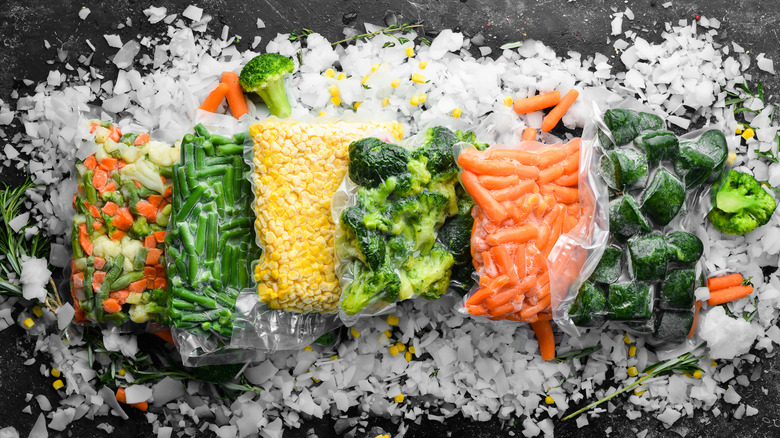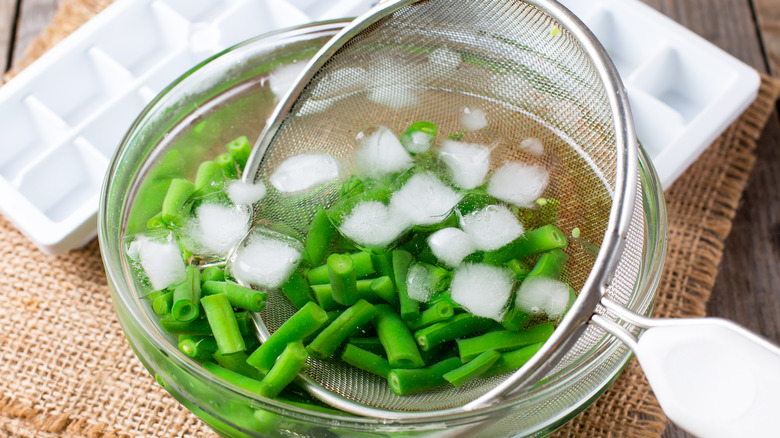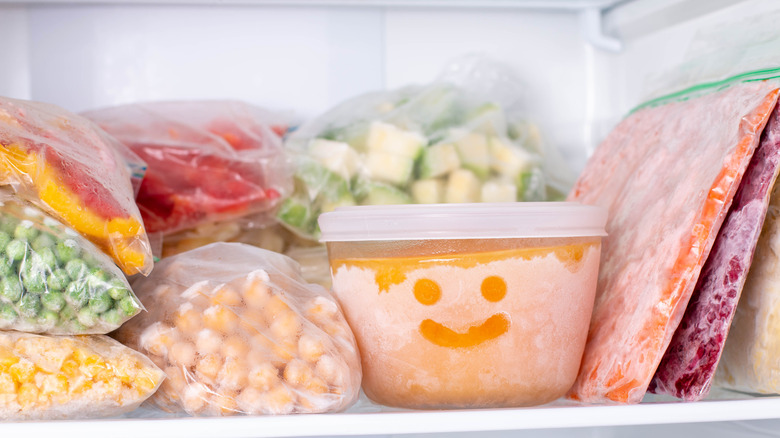The Mistake You're Making With DIY Frozen Vegetables
Crafting your own frozen vegetables can be a satisfying way to save your store-bought and home-grown seasonal favorites. It helps you stretch your food budget and cuts down on waste. Frozen vegetables sometimes get a bad rep, but they can be used in a plethora of recipes. Even Ree Drummond understands the benefits of using frozen vegetables.
If you're not successful with DIY frozen vegetables, it could be because you're not preparing them properly. Before you "DIY freeze," you need to blanch many of the veggies that you want to preserve. Your DIY veggies will be crispy and fresh-tasting, which can make all the difference in a meal. To preserve the integrity of your vegetables (especially vegetables with lots of water), you need to blanch them first.
The ripening process is halted during blanching, improving the quality of the vegetables. Blanching preserves the structural integrity of your veg, but it also prevents nutrient loss — so long as you don't overcook them. A 2023 study by the Journal of Food Science found that freezing vegetables is also a great way to retain their nutritional value. As an added bonus, blanching is known to kill bacteria.
Some of the best vegetables to blanch and freeze are Brussels sprouts, corn, carrots, greens, sugar snap peas, green beans, broccoli, cauliflower, and tomatoes. These are the basis for so many dishes, and freezing these enables you to meal plan with a diverse set of ingredients.
Wash, chop, blanch, freeze
There are a few exceptions to the blanching rule, like onions and peppers – something you've probably frozen raw since you've been cooking. And while you may be compelled to freeze all of your surplus, not all vegetables are meant to be frozen. Sometimes vegetables with a high water content don't freeze well, like lettuce. No one likes mushy or soggy vegetables.
What's worse? Freezer-burn. When you reach for a bag of frozen DIY peas and they've oxidized, it's unappealing to see a frost-bitten part of your meal (although they are still safe and edible — but they'll be dry). The preparation and process are not difficult, but it's really important to take the time to do it right.
Washing vegetables is a must even if they're straight from your garden. Chop them so that the portions are suitable for meal preparation — plus, they'll thaw faster. Gather all the supplies you need for blanching and freezing your veg. Make your process easier by setting up an ice bath to use after the vegetables are out of the blanching water. If steam blanching, you'll need a wire basket or strainer. Use fresh water for each pot of vegetables you blanch. Get your storage containers ready, too. Use a slotted ladle to safely handle your produce — no one wants to burn themselves when blanching.
Prep and prep again
Once the vegetables are properly prepared, store them in containers such as plastic freezer bags (but leave no air in the bags). The National Center for Home Food Preservation recommends leaving some space at the top of each bag. Label the containers with the date and the name of the vegetable. You might think you'll remember what's in there, but save yourself the confusion.
Freezing vegetables without any preservatives is a great way to avoid food waste and make your meal prep easier down the line. Just make sure you're not intending to eat the thawed vegetables without cooking them — your tomatoes are going to be mush, but that doesn't mean they won't make a mean tomato sauce. The best part of freezing tomatoes from, say, your own garden is that you can make a tomato sauce recipe that uses the leaves too for extra flavor. Have a bunch of carrots? Make a nourishing and nutty carrot and apple soup. The options are truly endless.



